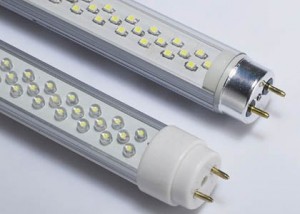Today we recognize the 45th Annual Earth Day. A day of celebrating the earth’s beauty and brilliance, today also serves as a stark reminder that we are constantly at odds with the planet we live on.
Historically, technology has advanced at a wonderfully rapid rate. However, this rate has exceeded our ability to recognize and mitigate any damages our new technologies inflict on the environment. While it’s not always possible to understand how technological advancements will affect the world, the rapid rise in global population along with increased population density greatly compounds the problems.
The good news is that for the first time in history the effect on the environment and energy efficiency has become a major consideration in technological design. This holds true in many industries, including building management, construction, automotive, food consumption and other consumer purchase decisions, as well as in things such as packaging and procurement.
Unfortunately, any such progress has only surfaced recently in developed countries. There is little recognition or action in population dense, underdeveloped countries with fast growing economies.
When Hank Paulsen Says Something, You Listen
 Former Treasury Secretary Hank Paulsen recently published a book that highlights this issue. In his book, “Dealing with China,” Paulsen sounds the alarm on two issues he says “are even more critical than the financial crisis: our relationship with China, and the environment.”
Former Treasury Secretary Hank Paulsen recently published a book that highlights this issue. In his book, “Dealing with China,” Paulsen sounds the alarm on two issues he says “are even more critical than the financial crisis: our relationship with China, and the environment.”
Part of the book highlights China’s rapidly growing economy, one that is set to outpace the U.S. very soon. Unfortunately, China is also on a path toward becoming the leader in greenhouse gas emissions as well. With lagging environmental standards, unchecked growth could wreak havoc on the environment with repercussions around the world. With India and several other developing nations experiencing rapid economic growth, this problem will only become more difficult to address.
This all paints an uncertain future for our planet. With advancements in medicine and increasing longevity, over-population will only compound environmental issues. Currently, the world population is projected to reach 9.6 billion by 2050.
Setting a good example in developed countries and working together towards a cohesive approach to this situation, regardless of political ideology, must become a priority.
What Can You Do?
Protecting the environment is too large and complicated a task for one country, one technique, or one program to ever solve completely. A more fitting solution consists of every world citizen proactively taking steps to minimize their own carbon foot print.
If you manage or own buildings or facilities that consume energy, then managing those facilities more efficiently is a great place to start. We have outlined below five ways to reduce your building operating expenses while protecting the environment:
1. Benchmark Energy Performance
One of the most important things you can do is to begin benchmarking your energy performance. This is the only way to know how “green” you are and where you can improve.
The federal government provides an excellent program in ENERGY STAR. ENERGY STAR benchmarking is provided through the EPA along with a number of tools and resources for energy efficiency. Achieving an ENERGY STAR certification can do wonders not only for the environment, but for your utilities costs as well.
2. Use Energy Efficient Machinery and Lighting
 Outdated machinery and more importantly, lighting, can seriously hurt energy efficiency. In a typical building, lighting is the number one consumer of energy. This is because modern fluorescent bulb design dates back to the 1930’s. Back then the environment and energy efficiency were not considered in the design; the product simply had to work. Older light designs produce more heat as well, taxing cooling systems.
Outdated machinery and more importantly, lighting, can seriously hurt energy efficiency. In a typical building, lighting is the number one consumer of energy. This is because modern fluorescent bulb design dates back to the 1930’s. Back then the environment and energy efficiency were not considered in the design; the product simply had to work. Older light designs produce more heat as well, taxing cooling systems.
To combat this you can install energy efficient lights and machinery. They will last longer and improve your building’s energy profile. New lighting technologies light rooms more efficiently, too. Some examples include:
- Special fixtures and lenses that further increase lighting efficiency
- Dimmer switches
- Occupancy sensors
- Sunlight sensors (switches lights off when the ambient sunlight is strong enough)
3. Use Green Materials
When constructing new buildings, expansions or making renovations, use green certified builders and engineers. They will use higher quality materials designed for efficiency. If you benchmark with a program like ENERGY STAR, they can help you meet your specifications.
Go a step further and work with green builders to procure green/recycled materials. There are several companies that recycle and reuse old supplies or who have created completely new green construction materials.
4. Change Operations
 Changing office operations is another great way to minimize carbon footprint. Some great ways to do this are:
Changing office operations is another great way to minimize carbon footprint. Some great ways to do this are:
- Encourage carpooling with a reward program
- Mass transit reimbursement
- Bike racks
- Allow telecommuting when possible
- Paper-reduction policies
Although the “true” paperless office hasn’t been realized yet, there are many services available that can get you closer. Not only does paperless help the environment, but it also increases workflow efficiency and reduces your waste removal costs.
5. Take Advantage of Government Incentives
There are several financial incentives available on the federal and state level as well as utility incentives. These incentives come in the form of tax credits, rebates, alternate rates and even low interest loans for energy efficient projects. These incentives vary by state and utility but are all fairly attainable with the right guidance. Why not save a little on your way to reducing your carbon footprint?
The importance of Earth Day cannot be overstated. We need to educate ourselves and help educate others on the importance of the environment and our relationship with it. Now is an exciting time as new materials and technologies – designed with the environment in mind – are advancing at an exponential rate. Setting a good example here at home, in our own lives and organizations, is the best way to celebrate Earth Day.
Valerie Paquin is manager of energy services at Cost Control Associates. Since 1999 she has developed her utility-cost expertise for energy, water/sewer, telecom and waste removal. She earned the designation of project executive in 2012. Valerie received her ABA in accounting from State University of New York-Adirondack. Learn more.
